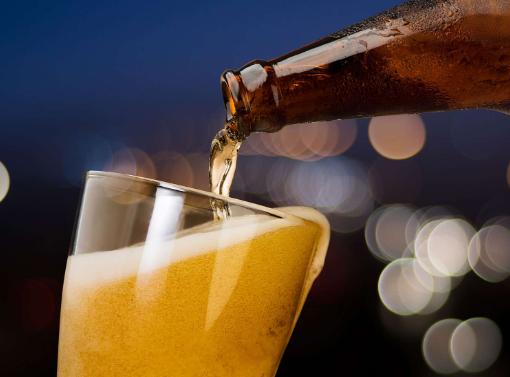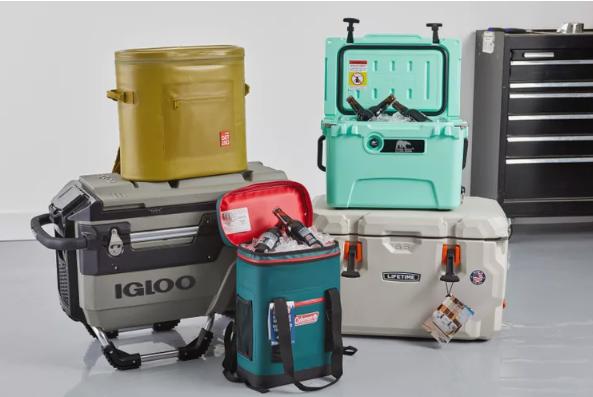Most beer drinkers know it’s best to serve and drink cold beer than room temperature. But did you know that there is a perfect temperature to serve beer?
If you drink wine, you know how important it is to have your drink at the ideal beer temperature of celsius for the best experience. Beer is no exception, and depending on the type of beer you want to drink.
A separate beer fridge will keep it at the ideal serving temperature if you’re serious about different beer styles and drinking beer (alcohol-free or regular strength).
Otherwise, you can try some of our beer storage tips to get it as close to the ideal temperature for beer as possible.
What Is The Perfect Temperature For Beer?
The perfect temperature for any beer depends on what style of beer it is.
For the best taste, beer should always be stored in the fridge or a beer cooler and reach its ideal serving temperature before drinking.
Pilsners and Pale Lagers: Steam Whistle and other playful pilsners are best served at 3 to 4 degrees Celsius.
Medium Lagers: Serve lagers at a temperature of around 8 degrees C.
Light Lagers: Enjoy light lagers at 0 to 4 degrees C is just the right temperature.
Amber/Oktoberfest/Marzen Lagers: You’re going to go a little bit warmer for these darker lagers. Aim for a temperature of 10 degrees C.
Blonde/Cream Ale: These light-bodied ales are ideally enjoyed at around 7 degrees C.
Pale Ale: Drink your pale ale at a flavorful temperature of 7 to 10 degrees Celsius. At 10 to 12 degrees, a fuller-bodied English-style pale ale tastes great.
India Pale Ale: Crank your fridge temperature to 3 degrees C to get the best flavor from your IPA.
American Pale Ales: Enjoy this beer at a mild 7 to 10 degrees Celsius.
Stout Ale/Black Ale/Porter: Darker beers such as these should be enjoyed at a temperature of 10 to 12 degrees Celsius. These dark ales are suited to warmer the beer in a temperature range.
Wheat Beers: Whatever the form of your wheat beer, the best temperature range to serve one at is between 4 and 7 degrees C.
Why Temperature Matters
Temperature affects beer’s flavor profile because higher temperatures cause the flavors and aromas in a beer to become more intense, while lower temperatures make them less intense.
For example, an IPA will taste more bitter when served ice cold beer due to the enhanced hop bitterness, whereas stouts and porters will taste too sweet if served too warm. On the other hand, lagers tend to have a smoother flavor when served colder than ales do.
In general, lighter beers are best enjoyed around 45-50°F, while heavier beers should be consumed closer to 55-60°F. T
Light beers have fewer flavors and aromas, so they need cold temperatures to bring out their subtleties. Heavier beers have stronger flavors to handle warmer temperatures without becoming overwhelming.
Storing Your Beer
If you plan on storing your beer for any time, it’s important to store it at the right temperature to keep its quality intact. For most types of beer, that means storing them somewhere between 35-40°F.
This temperature range allows minimal oxidation, preventing your beer from becoming stale. It’s also important not to expose your beer to too much sunlight as this can cause skunking—a process where light breaks down the compounds in hops and imparts them with an off-putting odor and flavor.
The Best Beer Serving Temperature Guide
The enjoyment of your beer – whether regular strength or alcohol-free – can be measured by a few minor changes in how you drink it. In this article, we’ll cover how the beer serving temperature greatly affects your enjoyment of your beer.
When we drink beer at home, we frequently overlook the proper serving temperature, which can significantly impact the aromas and flavors of what we enjoy so much in the pub.
How To Achieve The Perfect Temperature For Beer
The key to achieving the optimal drinking temperature for your favorite type of beer is to store it in the right place.
Do not store your beer in the fridge or freezer; aim for a cool storage area such as a cellar or basement.
This will ensure that your beer stays cold enough but not too cold, so you can enjoy its full flavor profile when you open it up and pour a glass. If you don’t have access to a cool storage area or cellar, you can also use an ice bucket filled with ice water; this will help keep your beer chilled without putting it in the fridge or freezer.
Finally, if all else fails and you need to quickly cool down your beers before enjoying them, try putting them in an ice bath before pouring them into glasses!
Warm Beer Isn’t Always A Bad Thing
The temperature has complex interactions with beer; serving it too cold can dilute the aroma and flavor profile.
So your more complex, distinctly flavored beers will benefit from being served a few degrees warmer than a traditional light beer. You wouldn’t want to lose that bold flavor right now, would you?
Let’s examine 2 major rules of thumb to get your beer’s right temperature.
Color – The darker the beer, the warmer it should be served.
Alcohol Content – The stronger the beer, the warmer it should be served.
Conclusion
The perfect temperature for drinking different kinds of beer depends on many factors, including personal preference and the beer’s consumption style.
Although many like chilled or ice-cold drinks, some styles work better at slightly warmer temperatures, which helps bring out their subtle flavors and aromas.
When storing your brews, it’s important to keep them at cooler temperatures and away from direct sunlight, as this can cause skulking, resulting in an unpleasant taste and smell.
Considering these few simple steps, you will ensure that your beers remain fresh and flavorful!
CHECK OUT: This Mash Temperature Chart in order to understand what temperatures your mash should be for different results during brewing.






Beauty is always in the eye of the beholder. To some, I sound like a philistine when I gulp down a frosty black beer in the Japanese heat, or let a Czech pilsner warm up a little in the glass during a Sydney winter.
The “perfect temperature” is up to you, the drinker!